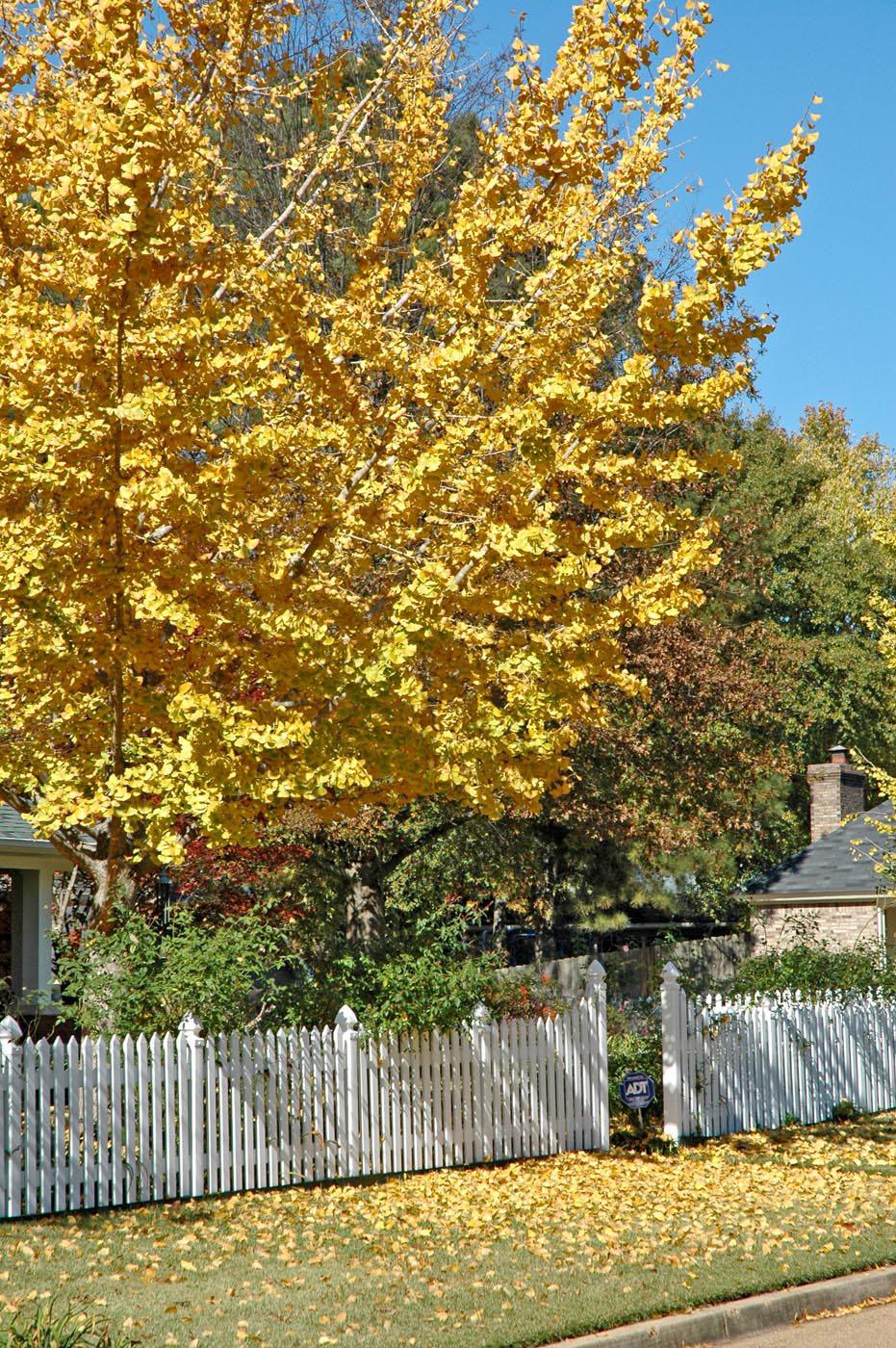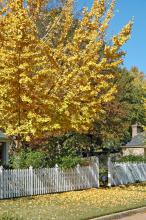Information Possibly Outdated
The information presented on this page was originally released on November 20, 2007. It may not be outdated, but please search our site for more current information. If you plan to quote or reference this information in a publication, please check with the Extension specialist or author before proceeding.
Ginkgo paints perfect fall landscape picture
By Norman Winter
MSU Horticulturist
Central Mississippi Research & Extension Center
No tree can paint a picture in the landscape quite like the Ginkgo biloba. I recently wrote about the Autumn Blaze red maple and how its fiery scarlet oranges were lighting up landscapes, and now it's the Ginkgo tree's turn.
The fall color of the ginkgo, also called maidenhair tree, is such a bright yellow, it catches the eye from a great distance. It can be seen for miles against a backdrop of pines. When in fall color, people stop and take pictures of their kids under the tree. The yellow leaves fall quickly and cleanly, making a carpet of gold that is a picture in itself. The bark is also a handsome feature.
The ginkgo is in the family called Ginkgoaceae, and it has no brothers or sisters. This family is now a single species. What most people find odd is that it is a gymnosperm (meaning naked seed) and is related to true conifers like cypress, pines, firs and spruces.
My first encounter with a ginkgo leaf was in the early 1970s when an old girlfriend had earrings of gingko leaves that had been gold plated. My first experience with the tree was on the Texas A & M campus, where one had been planted in horrendous soil. For four years it did not grow an inch.
In reality, the ginkgo has a wide area of adaptability from the South to states as far north as Michigan. It was brought to the United States in 1784 from Asia, but ginkgo fossils have been found in America. For a good debate, I love to pose the question: if ginkgo fossils have been found in America, does this not mean it's native?
In China and Japan, the kernels of the fruit borne on female trees are considered a true delicacy. The fruit, however, is legendary for its horrible smell. In a recent nursery certification training, a professor chuckled about one on the Mississippi State University campus near the cafeteria.
Unfortunately, many homeowners only know about the herbal extracts believed to help mental concentration and even memory. This possible attribute has come under scrutiny in recent years.
In the landscape, it's not hard to pick out ginkgo because of their unique pyramidal form and 45-degree branching. It is an exceptionally long-lived tree, so your children's children will thank you for planting it. It will slowly reach 80 to 100 feet tall with a spread of 30 to 40 feet.
It's considered an environmentally friendly plant because insects and diseases are not known to be of any consequence with ginkgo trees.
For an ideal specimen, grow ginkgo in full sun in deep and well-drained soil. This tree is unique in that it is tolerant of a range of soil acidity levels. If by some chance you wait until summer to plant your tree, then form a berm or ring around the root ball area large enough to hold five gallons of water. The berm can be removed after the first year.
Presuming you do not want a female tree, then look for varieties like Autumn Gold, Saratoga and Shangri-La. Talk to your local nursery worker for guidance.
People tend to develop a relationship with the ginkgo as they grow it and see it every day. Plant one and you'll find yourself outdoors getting personal with your own specimen.



